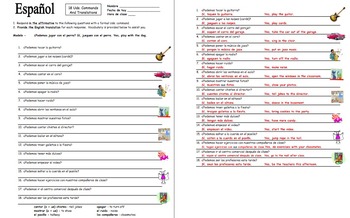

Literally, it means “ (with) permission.” (Con) permiso – 🇬🇧 Excuse me (when plowing your way through a crowd or asking for permission).🇪🇸 Disculpe / Disculpen – 🇬🇧 Excuse me (when apologizing to 1 person / to 2+ people).🇪🇸 Encantado / Encantada – 🇬🇧 Delighted / With pleasure (masculine / feminine).🇪🇸 No se preocupe / preocupen – 🇬🇧 Don’t worry (singular / plural).🇪🇸 No es ninguna molestia – 🇬🇧 it is no hassle at all.🇪🇸 Si no es mucha molestia – 🇬🇧 if it is not much hassle.🇪🇸 Lo siento / lo lamento – 🇬🇧 I’m sorry.🇪🇸 No hay de qué – 🇬🇧 Don’t mention it.🇪🇸 Muchas gracias – 🇬🇧 Thank you very much.To make sure you have all the essential phrases covered, have a look at the list below: Formal Phrases to Show Good Manners in Spanishīeing a gentleman and showing respect is always a good idea, no matter how formal the situation. If you’d like to see more of such expressions and how they can be used in a context, please check out my posts on greetings, goodbyes, and introductions.Īlso, please note that where Spain Spanish adds “le” and “les” at the end of the verb to indicate a direct object, Latin American Spanish tends to add “lo” / “la” and “los” / “las”. Un placer haber les conocido – Nice meeting you. Un gusto en conocer les – It’s a pleasure to meet youĮncantado/a en conocer les– Pleased to meet you ¡Įspero ver les pronto – I hope to see you soon! Un placer haber le conocido – Nice meeting you. Un gusto en conocer le – It’s a pleasure to meet youĮncantado/a en conocer le– Pleased to meet youĮspero ver le pronto – I hope to see you soon! Now that we’ve established that point, let’s have a look at how certain formal greeting and goodbye phrases in Spanish change, depending on what subject they use (USTED or USTEDES). 🇪🇸 Ustedes tienen – 🇬🇧 you have (formal plural).🇪🇸 Vosotros tenéis – 🇬🇧 you have (informal plural).🇪🇸 Usted tiene – 🇬🇧 you have (formal singular).🇪🇸 Tú tienes – 🇬🇧 you have (informal).Let’s take the verb “ TENER” – “ TO HAVE” as an example: That means that you will have to conjugate the verb differently each time you change the pronoun from TÚ to USTED to VOSOTROS to USTEDES: Verb Conjugation in Formal Spanish Phrasesīefore I show you some of the Spanish phrases that have two different versions depending on the formality level, I’d like to review the basic grammar difference between TÚ and USTED.Īs you hopefully know by now, verbs in Spanish change their formdepending on the subject they refer to. 🇪🇸 ¡Buen viaje! – 🇬🇧 Have a good trip!.🇪🇸 ¡Hasta luego! – 🇬🇧 See you later! (it can be used both in a formal and informal context).🇪🇸 Buenas tardes – 🇬🇧 good afternoon / good evening.If you are still a beginner in Spanish, the phrases below will help you greet people and say goodbye to them in a formal or neutral way. Basic Formal Greetings and Good-Byes Spanish: Running errands, shopping, placing an order at a restaurant, getting a taxi, or booking a hotel room – these are also examples of formal situations that will have you use the USTED or USTEDES form.

Whenever you want to show respect, admiration, or helpfulness. What context requires you to speak formal Spanish? Whenever there is a difference in age or seniority level. If you are learning South American Spanish, you will actually never use the “VOSOTROS” form, as “USTEDES” is used here to indicate the plural “ YOU,” no matter if your relationship with those people is formal or casual. When you find yourself in a formal situation, however, you will have to replace “TÚ” with “ USTED” and “VOSOTROS” with “ USTEDES”. In everyday, casual conversations with friends, classmates, and peers, you will refer to people as “ TÚ” ( informal YOU), or – if there is more than one of them – as “ VOSOTROS” (at least in Spain) This ensures that each page points to every available localized version of itself, making it easy for search engines to understand the structure of your site and display the appropriate translation for every user.Once you’ve started studying Spanish, you will quickly realize that it has two different formality levels, unlike English. Make sure to add this block to both the original and localized versions of your page (in this case: /about/ & /es/about/).
FORMAL SPANISH TRANSLATOR CODE
In addition to the language attribute on the tag, each page should also include a section which contains links to localized equivalents of that page.įor example, if the primary language of your website is English and you want to translate it into Spanish, then every translated page should include the following block of code in the section: When translating a website into Spanish, it’s important to ensure that search engines can understand exactly which language (or languages) your content is available in.


 0 kommentar(er)
0 kommentar(er)
